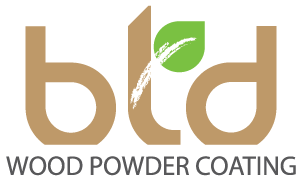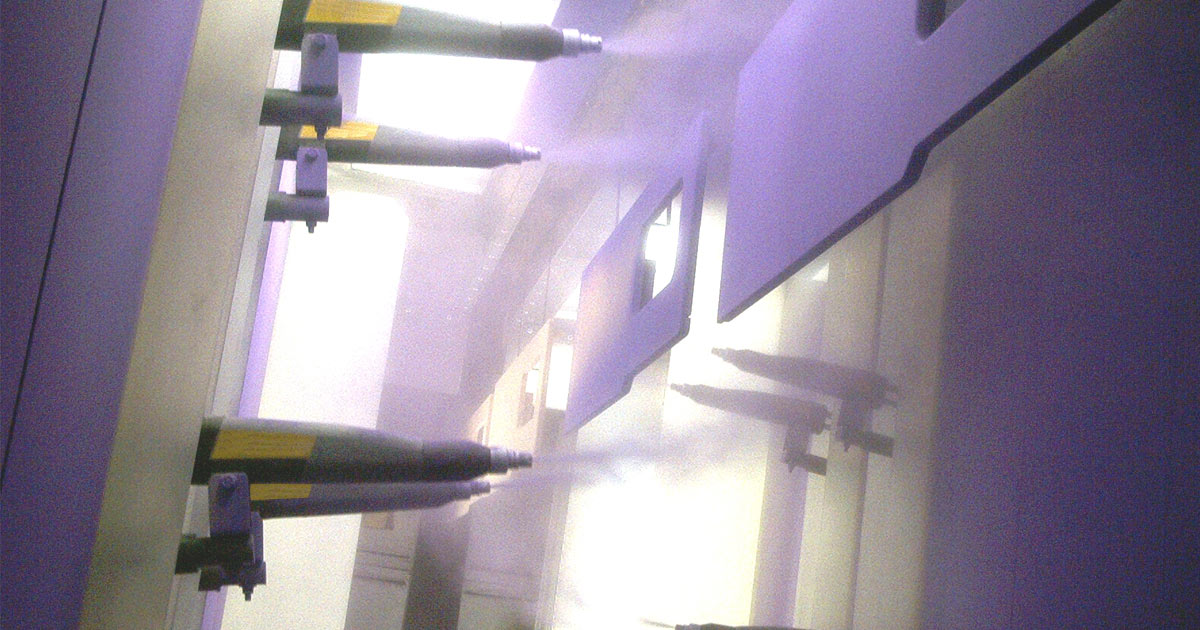Misconception #1: It’s not as durable as other finishes
Although durability has different meanings depending on the specific needs (e.g., abrasion resistance, stain resistance, or impact resistance), powder coated medium density fiberboard (MDF) remains one of the most durable wood finishes available, even when compared with laminate. Depending on the finish style, a quality powder coated wood finish has 5-7 mils of bonded coverage, and the powder is bonded directly to the board without adhesives to fail or bubble. And, if you need ultraviolet (UV) or direct heat resistance, this can be easily accomplished with custom powder formulations.
Powder coated wood combines durability with the beauty of a seamless painted look. See for yourself.
Misconception #2: To be cost-effective, large runs of a single part are required
The primary difference between wood powder coating and other manufacturing operations is that a single powder formulation is effective when sprayed onto virtually any shape or in any order. Once routed parts reach the spray booth, the powder adheres uniformly regardless of the shape. Therefore, color changeovers, not part changeovers, have the greatest effect on setup costs.
In addition to being well suited for traditional large runs of single matching parts, MDF powder coating particularly lends itself to jobs with a wide variety of parts in the same color. As a result, our customers can inventory fewer single parts, and we can readily ship kits for assembly versus whole pallets of a single part.
Powder coating opens the door for projects that may not be cost effective in other finishes.
Misconception #3: There are limited colors and gloss levels
Just like the powder coating process itself, the ability to create custom powder formulations means it’s cost effective to produce small batches of colors and gloss levels. And, you can create unique colors that are only found on your products. Need to match an existing color for drawer fronts or access pieces? That is also possible – color matching for powder can be done by using a swatch, RAL, or PMS number. Because powder coating provides coverage on all sides of a part, there is no need to worry about color matching of edge banding or backing.
Design shapes and contours on furniture and rest easy that you can get the color you want with wood powder coating.
Misconception #4: Wood powder coating can be done by anyone
Wood powder coating is as much art as it is science and requires an experienced team to implement correctly. There are many factors that contribute to a quality finish, including board moisture content, wood preparation and sanding, and proper curing. We’ve heard of several well-known manufacturers who have hired an internal team and set up a wood powder coating line only to eventually outsource the process to experienced specialists.
Powder coating MDF is certainly a challenging manufacturing process – but it’s also very rewarding.
Misconception #5: Wood powder coating is just another low-cost wood finish
Despite early limitations in finish and coverage, powder coating on wood actually requires significant investment for quality and environmental stewardship. Broadly speaking, a high-quality powder coated wood product is usually slightly more expensive than melamine – closer to the price of high-pressure laminate (HPL) – but less expensive than higher-end finishes such as liquid paint or veneers. Prices can vary substantially by volume, design, and other factors, so it is always a good idea to obtain quotes for the finish of any project – for price and to determine the right finish for your needs.
When done right, wood powder coating produces a higher quality, more durable, and more aesthetically pleasing finish.
Misconception #6: All powder coated wood finishes are the same
By now, it’s probably easy to identify why all powder coated wood finishes are not the same. In fact, the same powder applied by two different manufacturers can be noticeably different. Manufacturers can use different processes: thermal-only production, UV-only production, or a blend of both UV and thermal processes. And, some wood powder coaters can cut and prepare MDF in-house, which can be critical to a quality finish. Moisture content can be tightly controlled by minimizing the time between cutting and coating, and experienced powder coaters are in the best position to properly sand and prepare the board for coating.
Consistent quality also depends on the finish – some finishes are easier to coat correctly. Textured finishes hide board and coating flaws and are therefore the simplest to apply. Smooth and metallic finishes require prior research and development to maintain consistent quality.
Consistent, high-quality wood powder coating finishes rely on high tech and tried-and-true processes.


